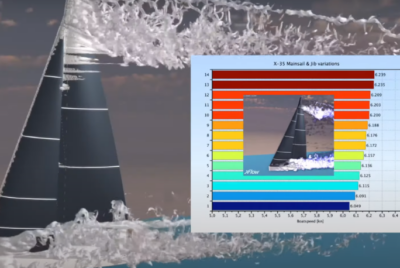Solar Sail: Navigating the Cosmos on Sunbeams
Greetings, fellow space enthusiasts! Join me as we embark on an exciting journey through the revolutionary realm of solar sail. These marvels of engineering and science are poised to redefine the way we explore the cosmos, harnessing the power of sunlight to propel us towards new horizons. So, strap in and let’s delve into the mesmerizing world of solar sails and their endless possibilities.
How Solar Sails Work
Imagine a sailboat in the vastness of space, its sail not catching wind, but sunlight. Solar sails operate on a simple yet profound principle: they use the pressure of sunlight to generate thrust. Photons from the Sun’s rays transfer momentum when they bounce off the reflective surface of the sail. Over time, this continuous push can propel spacecraft to remarkable speeds, unlocking unprecedented travel possibilities.
Advantages of Solar Sails
Harnessing Solar Radiation
One of the most captivating aspects of solar sails is their reliance on a renewable resource: sunlight. Unlike conventional rockets that carry fuel, solar sails are fueled by the very photons streaming from the Sun. This sustainable propulsion method offers the potential for extended missions, as long as the Sun continues to shine.
Propelling Spacecraft
Solar sails offer a gentle but constant acceleration, enabling spacecraft to reach high velocities over time. This gradual acceleration can lead to remarkable speeds and efficient travel across vast cosmic distances, which is particularly crucial for interstellar journeys.
Applications of Solar Sails
Interstellar Travel
Yes, you read that right—interstellar travel! Solar sails hold the promise of enabling humanity to send spacecraft to other star systems within our lifetime. By gradually reaching a substantial fraction of the speed of light, we could envision missions to nearby stars like Proxima Centauri, opening the door to the exploration of potentially habitable exoplanets.
Deep Space Exploration
Solar sails also shine in deep space exploration. They can provide a constant and gentle thrust, allowing us to maneuver with precision around celestial bodies, study asteroids, comets, and even position ourselves for breathtaking observations of distant galaxies.
Orbital Maneuvers
Even closer to home, solar sails have the potential to revolutionize satellite operations. By utilizing the pressure of sunlight, satellites could adjust their orbits, extend their missions, and contribute to reducing space debris.
Challenges and Limitations
While solar sails present remarkable opportunities, they also face certain challenges. In areas with low solar flux, such as outer regions of the solar system, thrust becomes limited. Additionally, the durability of sail materials in the harsh space environment is a concern that requires innovative solutions.
Design and Materials
Solar sail design is a delicate art. Thin-film technology and reflective layers play a crucial role in optimizing the sail’s performance. Reflective materials are chosen to maximize photon absorption and momentum transfer, while maintaining structural integrity.
Future Innovations in Solar Sails
The future of solar sails holds exciting innovations. Advanced propulsion techniques like combining laser propulsion with solar sails could accelerate spacecraft even further. Hybrid systems integrating traditional propulsion methods with solar sails might offer versatility for various mission profiles.
Building and Launching Solar Sail Spacecraft
The deployment of solar sails is an intricate process. Folding mechanisms are crucial for compact storage during launch. Launch strategies involve deploying the sail in stages to avoid damaging the delicate structures.
Recent Missions and Successes
The LightSail project, initiated by The Planetary Society, successfully demonstrated solar sail propulsion in 2019. The IKAROS mission by JAXA in 2010 showcased the viability of solar sail technology, further inspiring future endeavors.
Practical Tips for Solar Sail Enthusiasts
Staying updated on developments in solar sail technology and collaborating with space agencies can provide insight and avenues for participation. The journey towards widespread solar sail adoption is a collective effort.
Exploring the Environmental Impact
As we venture beyond our planet, sustainability becomes crucial. Solar sails offer a promising solution by utilizing renewable energy and potentially reducing the need for traditional rocket fuel, thus minimizing the environmental impact of space travel.
Influence on Space Travel Paradigm
The emergence of solar sails could redefine space travel. They expand the boundaries of what we thought possible, offering a new outlook on exploration, resource utilization, and humanity’s place in the cosmos.
Dreams of Exploring Other Star Systems
The dream of sending spacecraft to other star systems is within reach. Concepts for missions to Proxima Centauri using solar sails are gaining traction, hinting at a future where we can directly explore our stellar neighbors.
The Collaborative Future of Space Exploration
The journey of solar sails is a collaborative endeavor. International cooperation and public engagement will be crucial in realizing the full potential of these revolutionary propulsion systems.
Conclusion
As we conclude our voyage through the boundless expanse of solar sail technology, one thing becomes abundantly clear: the future of space exploration is vibrant and full of promise. Solar sails, driven by the gentle push of sunlight, offer us the chance to reach the stars and unveil the mysteries that await us. So, keep your eyes on the skies, for the age of solar-powered cosmic exploration is upon us.
FAQs
Can solar sails work beyond our solar system?
Indeed! Solar sails have the potential to propel spacecraft to other star systems, enabling interstellar exploration.
How fast can a spacecraft powered by solar sails go?
While speeds vary, solar sails can theoretically achieve a substantial fraction of the speed of light over time.
Are solar sails affected by space debris?
Yes, space debris poses a challenge. Careful mission planning and innovative sail materials can help mitigate this risk.
How long do solar sails last?
Solar sails can have long operational lifetimes, as they rely on sunlight for propulsion rather than finite onboard fuel.
How can I get involved in solar sail projekts?
Staying informed about developments, collaborating with space agencies, and supporting organizations focused on space exploration are great ways to get involved.




